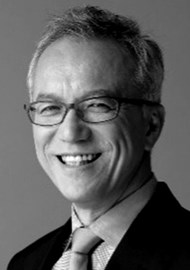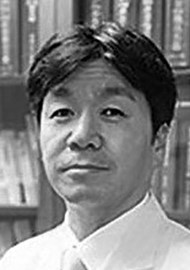Endoscopic ear surgery has been a rapidly evolving area of clinical practice in recent years. Our Global Ambassador in the Far East/ASEAN Region, Professor Tatsuya Yamasoba talks to one of the main exponents of this technique, and about the next World Congress on Endoscopic Ear Surgery.
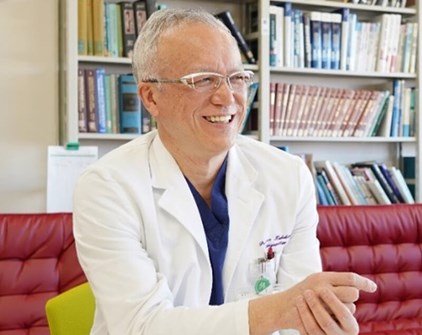
Professor Seiji Kakehata.
Prof Yamasoba: I am really happy that I have this opportunity to catch up on what you have been getting up to in Yamagata. First off, I understand that you are the head of the task force dealing with prevention of COVID-19 infections and treatment of COVID patients in Yamagata University Hospital. How has it been going for you up in the north of Japan?
Prof Kakehata: We have actually been doing fairly well, considering everything. As I am sure you know, as of the beginning of March 2021, Japan has reported approximately 440,000 infections, but fewer than 9000 deaths for a population of just under 130 million. We in Yamagata prefecture have weathered the past year even better than the Japanese figures nationwide, with less than 550 infections and 15 deaths for a population of little over a million. Our low figures can be attributed to low population density, less mass transportation and, since the beginning of the pandemic, a decrease in travellers from outside the region. While you in Tokyo face a huge challenge in trying to socially distance once you leave your residence, social distancing has always been a way of life for us in Yamagata!
We have made it sound like Yamagata is really isolated, but actually nothing could be further from the truth, particularly in terms of its contributions to the field of otology and specifically ear surgery. You were an early adopter of endoscopic ear surgery at Hirosaki University in Japan and have been heavily involved in its promotion at the international level in your position as the Head of the Department of Otolaryngology-Head and Neck Surgery at Yamagata University Faculty of Medicine. You are also in charge of organising the 4th World Congress on Endoscopic Ear Surgery to be held in Kyoto Japan in 2022. However, before we talk about what you are doing with the World Congress, let’s talk a bit about the history of the endoscope in ear surgery. Endoscopes have long been used in many surgical fields, but its use is relatively new in the field of ear surgery. Could you fill us in a little bit about the use of the endoscope in ear surgery?
You know the development of the endoscope can be traced back to the 1800s. The use of the endoscope really took off in the 20th century and most surgical fields switched many procedures from open to laparoscopic in the second half of the 20th century. However, even though ENT surgeons regularly used endoscopes in areas like sinus surgery or laryngoscopy, the use of the endoscope lagged behind in the area of ear surgery through the 20th century because, to put it bluntly, the endoscopes of the time were still too large, the access route was too narrow, the anatomical cavities were too small to work in, and the anatomical structures were diminutive. To top it all off, everything was just a blur when viewed via the pre-digital cameras of the day. With the labyrinth of delicate structures and nerves, the margin for error was just too slim. That is why the endoscope was not incorporated early on into the ear surgeon’s toolkit and even today many ear surgeons prefer, understandably, to stick to the microscope.
What got things moving toward the incorporation of the endoscope?
Well, one of the first individuals to use the endoscope in the diagnosis of ear disease was a member of the faculty from your own University of Tokyo, Prof Yasuya Nomura in the 1980s. He published several papers on the use of a needle otoscope for photographing and diagnosing middle ear disease. Though his work marked a major milestone, a big takeaway from his papers was that considerable patience and persistence were required in taking and processing analog photos and the fuzziness of the resulting photos.
Dr Nomura actually gave a keynote lecture on his pioneering work at the 2019 Japan Otological Society meeting held in Yamagata. He described how thrilled he was to be able to finally get a direct peek in to previously hidden areas of the middle ear via the needle otoscope. We all should be both in awe of and indebted to his trailblazing work. The real breakthrough was actually the result of a confluence of things, but primarily the emergence of digital technology, particularly in the form of standard definition images, combined with the ability to store large amounts of data and the refinement of endoscopes and their illumination.

Endoscopic surgical views obtainable via TEES with a full HD camera. (Photos provided by Seiji Kakehata).
I am glad to hear that one of my predecessors at my university got the ball rolling. Who actually started using the endoscope in surgery?
Dr Jean-Marc Thomassin started using what he called a rigid teleotoscope in standard microscopic procedures to document the location of cholesteatomas in 1985. He then further reported on endoscopic-guided surgery in 1993 which was incorporated into second-look procedures to check for and even remove residual cholesteatomas. Then Dr Muaaz Tarabichi took it up a notch and performed ear surgery with just an endoscope. He really is considered the father of what is now known as transcanal endoscopic ear surgery or TEES. His first paper was published in 1997 in which he reported on 36 patients who successfully underwent middle ear procedures.
However, TEES did not really take off immediately in the late 1990s into the early 2000s. What accounts for the delay?
You are right in noting that TEES was not immediately embraced. One huge barrier was the preconceived notion among ear surgeons that ear surgery was completely synonymous with microscopic ear surgery. Most surgeons would not even entertain an endoscopic surgical approach. However, setting aside that attitude and other ‘non-technical’ issues such as the need to perform surgery with one hand and the change in posture to a heads-up approach, the limitations of standard definition images, one-chip CCD video cameras and the 2D images were major factors in the slow adoption of EES. However, everything changed with the emergence of high definition or HD images and three-chip CCD cameras. Suddenly images were much, much clearer and crisper which greatly compensated for any drawbacks associated with a 2D image. Endoscopic surgical views obtainable via TEES with a full HD camera. (Photos provided by Seiji Kakehata).
I understand that you were involved in the establishment of an international working group on endoscopic ear surgery. Could you tell us a little bit about that?
The International Working Group on Endoscopic Ear Surgery or IWGEES was founded in 2008 by a group of nine surgeons chaired by Dr Stephane Ayache of France and including myself. By 2015 we had progressed to the point where we were able to hold our 1st World Congress on Endoscopic Ear Surgery in Dubai, which was organised by Dr Tarabichi. This Congress attracted close to 200 attendees and provided an opportunity for like-minded surgeons to gather and exchange information and ideas on the newly emerging topic of endoscopic ear surgery. We have since held the 2nd World Congress in Bologna Italy in April of 2017 which was organised by Dr Livio Presutti and Dr Daniele Marchioni. Attendance at this Congress more than doubled to around 500 which I think underscores how interest in EES had grown. The 3rd Congress was held in Boston in June of 2019 and organised by Dr Daniel Lee and his group at Harvard and once again we had about 500 attendees. So I think that I can say that interest in endoscopic ear surgery has grown and will continue to grow into the future.
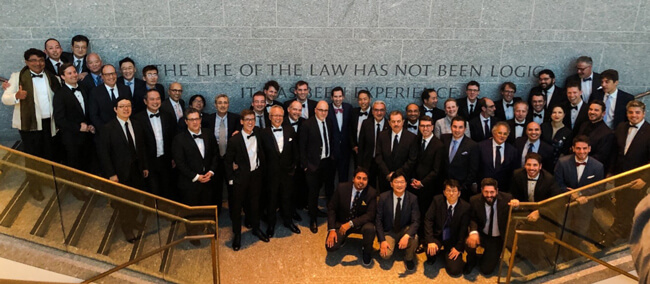
Board Members for the Third World Congress on Endoscopic Ear Surgery in Boston 2019
(Photo provided by Seiji Kakehata).
So if you are going at two-year intervals, the next Congress should be being held right about now in the spring or summer of 2021!
Well, you would be right except for the small matter of COVID-19! The 4th World Congress was scheduled originally for April 2021 in Kyoto with a satellite meeting afterwards in Yamagata. Japan was selected as the site of this Congress in recognition of more than just the contributions of Japan but also of the rest of Asia where TEES is rapidly spreading, including but not limited to South Korea, Taiwan, Hong Kong, China, Singapore and Australia.
However, it was apparent around early- to mid-2020 that holding a face-to-face international meeting in 2021 would be highly unlikely. Fortunately, we were able to move our reservations for the same conference facilities to 5-8 April, 2022. We are now crossing our fingers that things will have gotten somewhat back to normal by then.
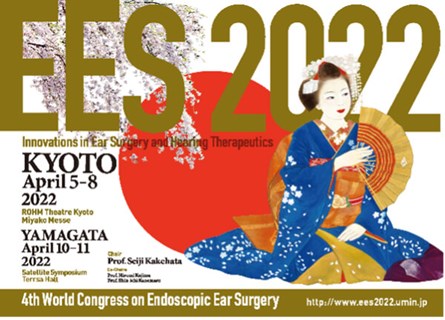
Poster for the 4th World Congress on Endoscopic Ear Surgery
http://www.ees2022.umin.jp (Photo provided by Seiji Kakehata).
If someone wanted to attend the conference what should they expect?
In comparison to previous Congresses, the 4th Congress is going to focus on both what endoscopic ear surgery is for those who are interested but have not yet taken the plunge, but also what the future holds for endoscopic ear surgery as it enters a new stage of maturity and acceptance within the otology community. We shall honour the past by showcasing the work of some of the pioneers of endoscopic ear surgery. Our original lineup was the aforementioned Dr Tarabichi, Dr Nomura and Dr Presutti along with Dr Naoaki Yanagihara. Dr Yanagihara is actually best known for his development of the Yanagihara scale for evaluating facial nerve palsy, but he also incorporated the endoscope into a microscopic canal wall up tympanoplasty for removal of middle ear cholesteatomas. Unfortunately, Dr Yanagihara passed away at the end of 2020, so while our other pioneers should attend the Congress and talk about their work, we are preparing a special memorial tribute for Dr Yanagihara. We shall also look into the future at the 4th Congress and some of the topics which will be included are heads-up surgery, the exoscope, robotics, using the endoscope as a mode of delivery for emerging therapeutics and numerous improvements to current surgical techniques.
Do you have any closing thoughts that you would like to convey to our readers?
Yes, I would like to extend an invitation to all aspiring and experienced ear surgeons to sign up for the 4th World Congress on Endoscopic Ear Surgery in Kyoto in April of 2022. If the stars align and we have gained control over COVID-19, we should be able not only to hold the Congress but also be able to enjoy the beauty of Kyoto which should be awash with cherry blossoms. I hope to see you there!

